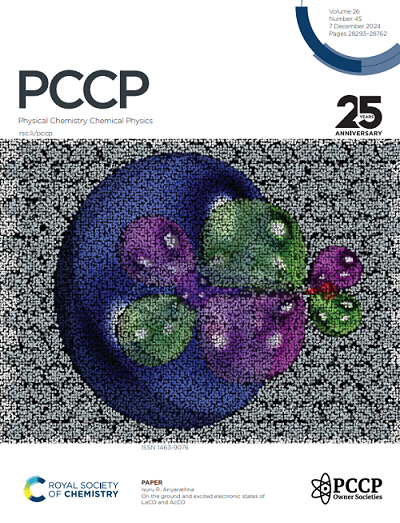Ultrafast X-ray induced damage and nonthermal melting in cadmium sulfide
IF 2.9
3区 化学
Q3 CHEMISTRY, PHYSICAL
引用次数: 0
Abstract
Cadmium sulfide is a valuable material for solar cells, photovoltaic, and radiation detectors. It is thus important to evaluate the material damage mechanisms and damage threshold in response to irradiation. Here, we simulate the ultrafast XUV/X-ray irradiation of CdS with the combined model, XTANT-3. It accounts for nonequilibrium electronic and atomic dynamics, nonadiabatic coupling between the two systems, nonthermal melting and bond breaking due to electronic excitation. We find that the two phases of CdS, zinc blende and wurtzite, demonstrate very close damage threshold dose of ~0.4-0.5 eV/atom. The damage is mainly thermal, whereas with increase of the dose, nonthermal effects begin to dominate leading to nonthermal melting. The transient disordered state is a high-density liquid, which may be semiconducting or metallic depending on the dose. Later recrystallization may recover the material back to the crystalline phase, or at high doses create an amorphous phase with variable bandgap. The revealed effects may potentially allow for controllable tuning of the band gap via laser irradiation of CdS.求助全文
约1分钟内获得全文
求助全文
来源期刊

Physical Chemistry Chemical Physics
化学-物理:原子、分子和化学物理
CiteScore
5.50
自引率
9.10%
发文量
2675
审稿时长
2.0 months
期刊介绍:
Physical Chemistry Chemical Physics (PCCP) is an international journal co-owned by 19 physical chemistry and physics societies from around the world. This journal publishes original, cutting-edge research in physical chemistry, chemical physics and biophysical chemistry. To be suitable for publication in PCCP, articles must include significant innovation and/or insight into physical chemistry; this is the most important criterion that reviewers and Editors will judge against when evaluating submissions.
The journal has a broad scope and welcomes contributions spanning experiment, theory, computation and data science. Topical coverage includes spectroscopy, dynamics, kinetics, statistical mechanics, thermodynamics, electrochemistry, catalysis, surface science, quantum mechanics, quantum computing and machine learning. Interdisciplinary research areas such as polymers and soft matter, materials, nanoscience, energy, surfaces/interfaces, and biophysical chemistry are welcomed if they demonstrate significant innovation and/or insight into physical chemistry. Joined experimental/theoretical studies are particularly appreciated when complementary and based on up-to-date approaches.
 求助内容:
求助内容: 应助结果提醒方式:
应助结果提醒方式:


